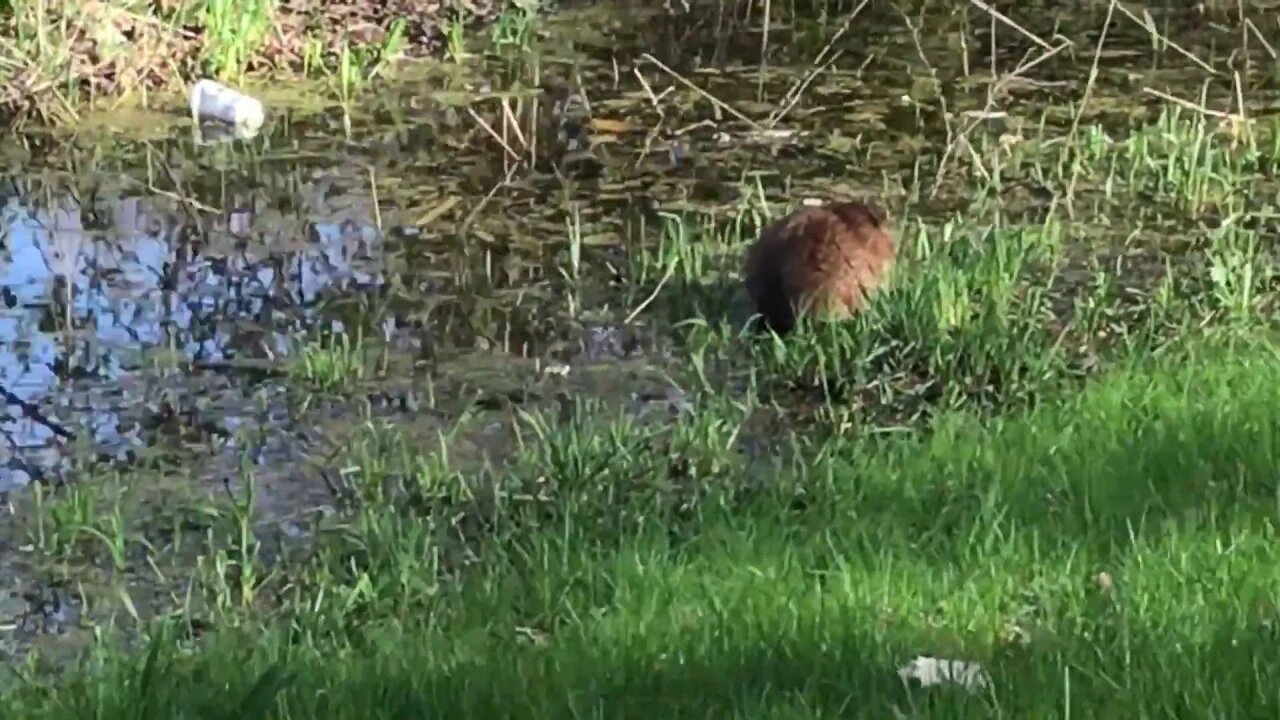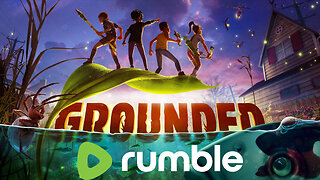Premium Only Content

A camera shy muskrat
Join this channel to help me bring you more vids...
https://www.youtube.com/channel/UCS-ix9RRO7OJdspbgaGOFiA/join
Join the free von Panda group here... https://panda-research-institute.mn.co
Get Peter von Panda gear here... https://petervonpanda.storenvy.com/
Instagram... https://www.instagram.com/petervonpanda/
As an Amazon Associate I earn from qualifying purchases.
Get muskrat merchandise here... http://geni.us/UjeXw
The muskrat (Ondatra zibethicus), the only species in genus Ondatra and tribe Ondatrini, is a medium-sized semiaquatic rodent native to North America, and is an introduced species in parts of Europe, Asia, and South America. The muskrat is found in wetlands over a wide range of climates and habitats. It has important effects on the ecology of wetlands,[2] and is a resource of food and fur for humans.
The muskrat is the largest species in the subfamily Arvicolinae, which includes 142 other species of rodents, mostly voles and lemmings. Muskrats are referred to as "rats" in a general sense because they are medium-sized rodents with an adaptable lifestyle and an omnivorous diet. They are not, however, members of the genus Rattus.
An adult muskrat is about 40–70 cm (16–28 in) long, half of that is the tail, and weighs from 0.6–2 kg (1.3–4.4 lb).[12] That is about four times the weight of the brown rat (Rattus norvegicus), though an adult muskrat is only slightly longer, and are almost certainly the largest and heaviest members of the diverse family Cricetidae, which includes all voles, lemmings, and most mice native to the Americas. Muskrats are much smaller than beavers (Castor canadensis), with which they often share their habitat.[5][6]
A muskrat skull
Muskrats are covered with short, thick fur which is medium to dark brown or black in color, with the belly a bit lighter (countershaded); as the age increases, it turns a partly gray in color. The fur has two layers, which helps protect them from the cold water. They have long tails covered with scales rather than hair, and to aid them in swimming, are slightly flattened vertically,[13] which is a shape that is unique to them.[14] When they walk on land, their tails drag on the ground, which makes their tracks easy to recognize.[5][6]
Muskrats spend much of their time in the water and are well suited for their semiaquatic life. They can swim under water for 12 to 17 minutes. Their bodies, like those of seals and whales, are less sensitive to the buildup of carbon dioxide than those of most other mammals. They can close off their ears to keep the water out. Their hind feet are semiwebbed, although in swimming, their tails are their main means of propulsion.[15]
-
 8:50
8:50
Peter von Panda
1 year agoV-Line Under Desk Safe Has A Cool Lock
1.33K1 -
 LIVE
LIVE
Barry Cunningham
3 hours agoPRESIDENT TRUMP ANNOUNCES THE CHIPOCALYPSE! AND I'M HERE FOR IT! (AND MORE NEWS)
16,758 watching -
 LIVE
LIVE
SavageJayGatsby
1 day agoSpicy Saturday | Let's Play: Grounded
53 watching -
 13:37
13:37
Exploring With Nug
7 hours ago $0.34 earnedTrying to Uncover Secrets in St Augustine’s Waters Missing Person Search!
1.34K -
 LIVE
LIVE
Mally_Mouse
1 day ago🔥🍺Spicy HYDRATE Saturday!🍺🔥-- Let's Play: Grounded
71 watching -
 24:09
24:09
MYLUNCHBREAK CHANNEL PAGE
1 day agoDams Destroyed The Ozarks
51.8K23 -
 LIVE
LIVE
SpartakusLIVE
2 hours agoVerdansk Duos w/ Nicky || Saturday Spartoons - Variety Later?!
194 watching -
 1:32:54
1:32:54
Jeff Ahern
4 hours ago $23.78 earnedThe Saturday Show with Jeff Ahern
75.9K9 -
 LIVE
LIVE
TheManaLord Plays
6 hours agoMANA SUMMIT - DAY 1 ($10,200+) | BANNED PLAYER SMASH MELEE INVITATIONAL
224 watching -
 LIVE
LIVE
Major League Fishing
2 days agoLIVE Tackle Warehouse Invitationals Championship, Day 2
191 watching